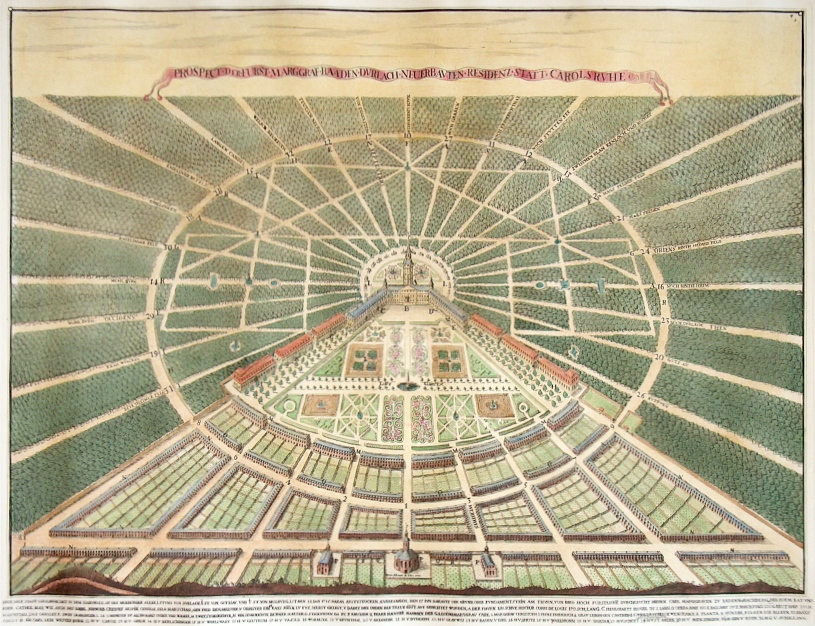Karlsruhe Pyramid on:
[Wikipedia]
[Google]
[Amazon]


 The Karlsruhe Pyramid is a
The Karlsruhe Pyramid is a
 The Karlsruhe Pyramid is a
The Karlsruhe Pyramid is a pyramid
A pyramid (from el, πυραμίς ') is a structure whose outer surfaces are triangular and converge to a single step at the top, making the shape roughly a pyramid in the geometric sense. The base of a pyramid can be trilateral, quadrilate ...
made of red sandstone
Sandstone is a clastic sedimentary rock composed mainly of sand-sized (0.0625 to 2 mm) silicate grains. Sandstones comprise about 20–25% of all sedimentary rocks.
Most sandstone is composed of quartz or feldspar (both silicat ...
, located in the centre of the market square of Karlsruhe
Karlsruhe ( , , ; South Franconian: ''Kallsruh'') is the third-largest city of the German state (''Land'') of Baden-Württemberg after its capital of Stuttgart and Mannheim, and the 22nd-largest city in the nation, with 308,436 inhabitants. ...
, Germany.. It was erected in the years 1823–1825 over the vault of the city's founder, Margrave
Margrave was originally the medieval title for the military commander assigned to maintain the defence of one of the border provinces of the Holy Roman Empire or of a kingdom. That position became hereditary in certain feudal families in the ...
Charles III William (1679–1738). The pyramid is regarded as Karlsruhe's second emblem, the city's absolutist layout in the shape of a folding fan being the first.
The pyramid's central location was originally occupied by the Lutheran Concord Church, a Baroque
The Baroque (, ; ) is a style of architecture, music, dance, painting, sculpture, poetry, and other arts that flourished in Europe from the early 17th century until the 1750s. In the territories of the Spanish and Portuguese empires including ...
timber-framed building. When Karlsruhe grew at the beginning of the 19th century, the church became too small and obstructed the southward expansion of the city and its market square. It was demolished in 1807, and initially a wooden pyramid was erected over the city founder's vault as a temporary measure before moving it into the new main church.
Due to lack of resources this plan could not be realised, and 16 years later architect Friedrich Weinbrenner
Friedrich Weinbrenner (24 November 1766 – 1 March 1826) was a German architect and city planner admired for his mastery of classical style.
Birth and education
Weinbrenner was born in Karlsruhe, and began his career apprenticed to his father, ...
designed the neoclassical stone monument as a permanent replacement for the old church. It has a square footprint and an exterior height of . The interior can be entered through a small square opening, but is only accessible with consent of its former owners (until 1940), the House of Baden. It consists of a vertical sequence of three chambers, the lowest of which is the original burial vault. The city's foundation stone is also located inside the pyramid. The monument is an example of Egyptian Revival architecture, inspired by the burial function of Egyptian pyramids
The Egyptian pyramids are ancient masonry structures located in Egypt. Sources cite at least 118 identified "Egyptian" pyramids. Approximately 80 pyramids were built within the Kingdom of Kush, now located in the modern country of Sudan. Of ...
and by similar buildings of the Napoleonic era. The pyramid was not affected by the extensive bombings in the Second World War.
Notes
References
* . * . * . {{Authority control Buildings and structures in Karlsruhe Buildings and structures completed in 1825 Egyptian Revival architecture Pyramids in Germany Tourist attractions in Karlsruhe